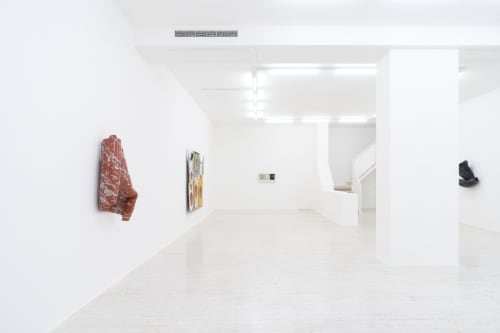The exhibition examines the choice, by each of the above-mentioned artists, of specific traditional materials for both their cultural associations and formal properties, enlightening also the significance role of traditional and concrete materials in the currently contemporary art.
Starting from the Sixties, the importance of materials has been re-evaluated by the critics, leading also to an expansion of the concept of Art itself. For the first time, material gained ascendancy over form. Only during the Seventies, the attention has been directed increasingly towards text written and pictorial documents as means of expression, while in the Eighties, artists went back to the balance of material and form. From the Nineties, however, the possibilities of digital technology led to a reduction in the importance of traditional and concrete materials. Nowadays the trend seems to have changed and the critics praise the generation of artists, such as Benglis, Novros and Zucker –and many more-, to whom the aspect of materiality has always been a key concept in their poetics, although each of them has dealt with it and integrated in their practices differently.
Benglis, Novros and Zucker tried to overcome the Minimalism’s break with unconventional formats of paintings and sculptures, investigating new limits and re-elaborating the classical tradition in the making of art. They believed that the chosen material should govern the character of the artwork and they thought in a more expanded sense of “technique”, which could encompassed the processes’ of the artist himself. The artists invited to participate at “Copper, Marble, Cotton” focus on the characteristics and the evocative power of such diverse materials as marble, copper and cotton.
Artists: Lynda Benglis, David Novros, Joe Zucker.



